Abstract
Isenberg, Henry D. (Long Island Jewish Hospital, New Hyde Park, N.Y.), Jona Allerhand, James I. Berkman, and Dorothy Goldberg. Immunological and toxic differences between mouse-virulent and mouse-avirulent Candida albicans. J. Bacteriol. 86:1010–1018. 1963.—The differences between mouse-avirulent and -virulent strains of Candida albicans reside at least in part in cell surface materials which can be extracted with solvents such as ethanolethyl ether and phenol. These extracts are complex haptens which behave like endotoxins in mice and rabbits. Antibodies produced against intact and extracted cells show some strain specificity in agglutination and precipitin reactions, but underline primarily the differences between the virulent and avirulent variants. The chemical constitution of the extracted complex haptens suggests that the toxic or virulent principles are polysaccharide in nature and that the avirulent strain substitutes fats and lipids for some polysaccharides on their cell surface.
Full text
PDF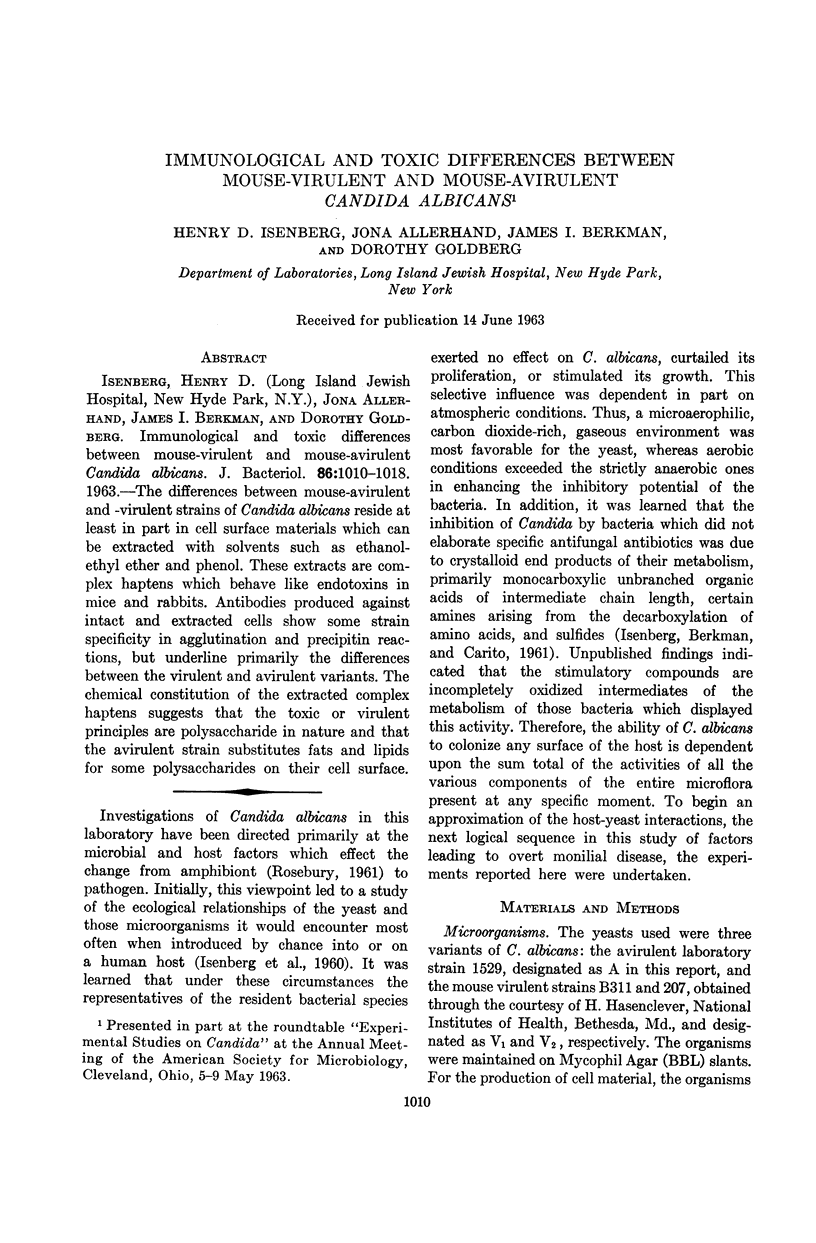

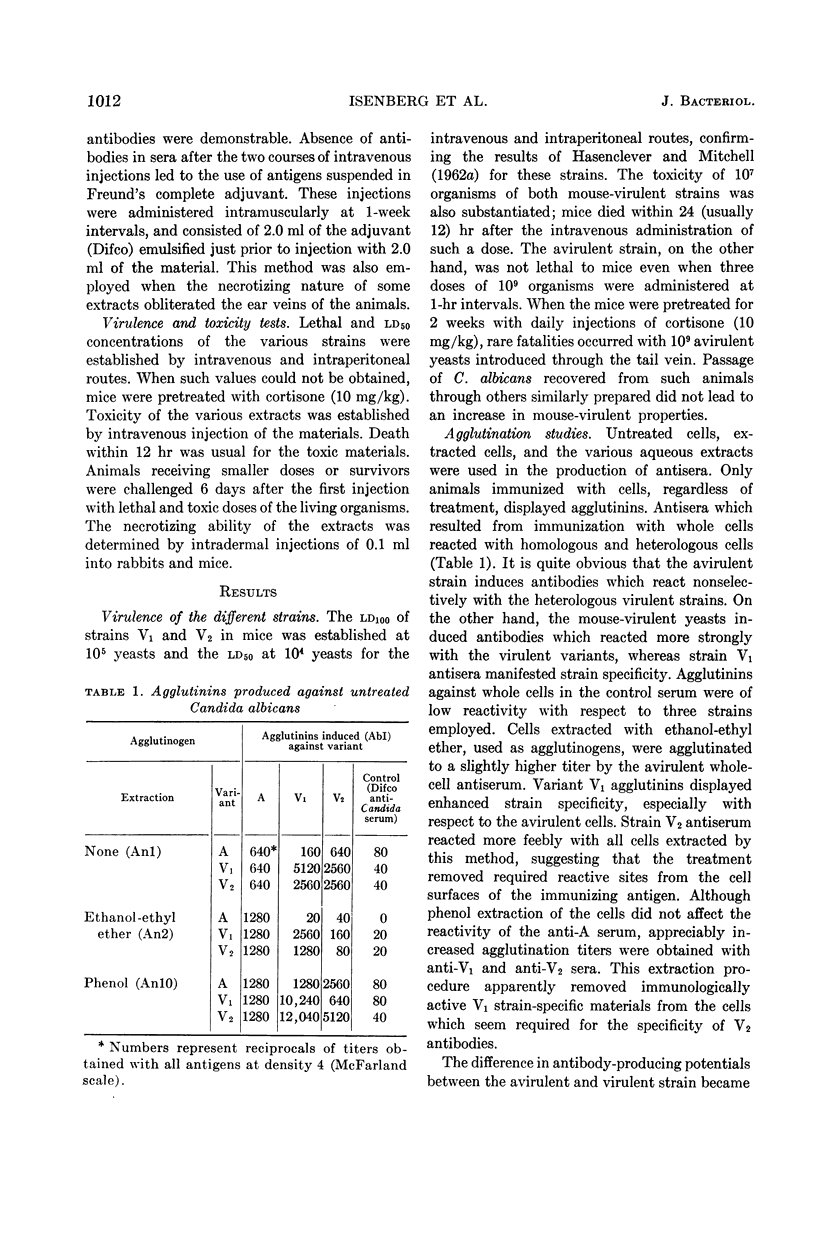
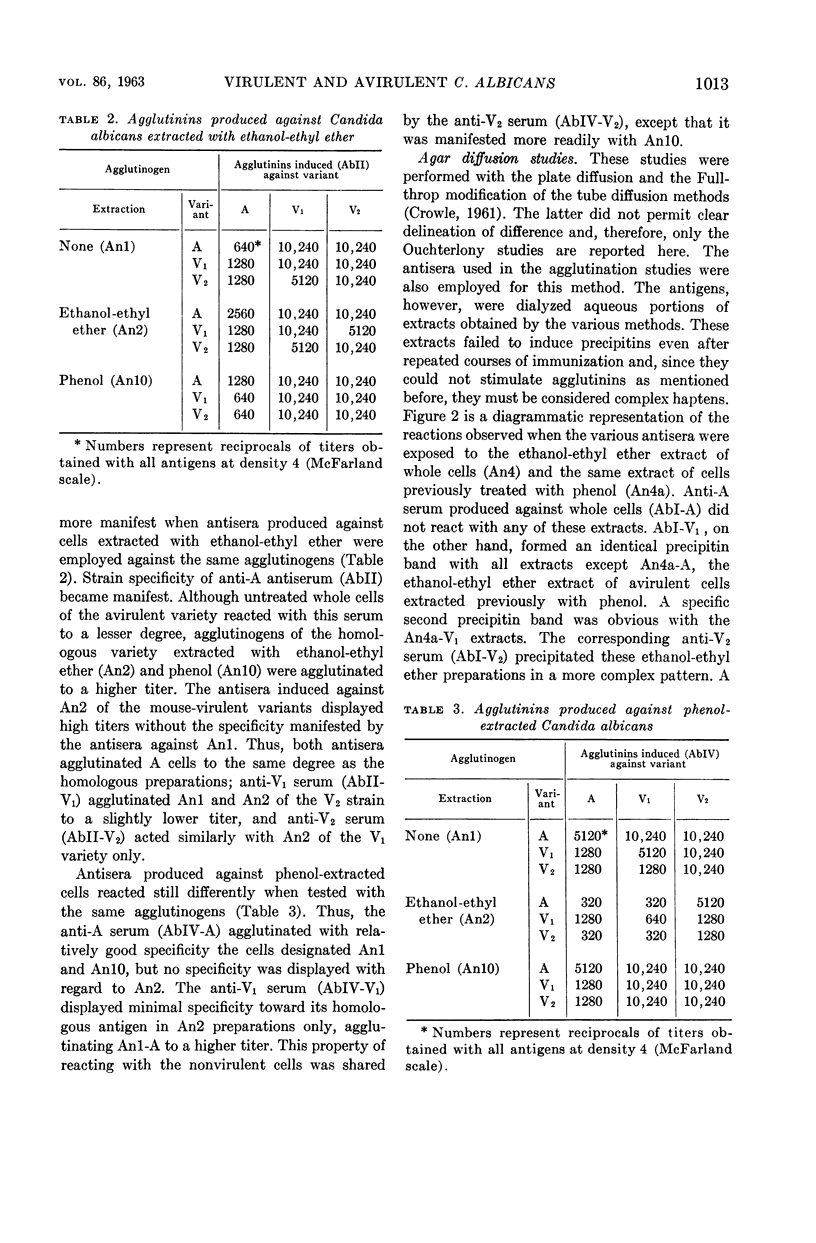
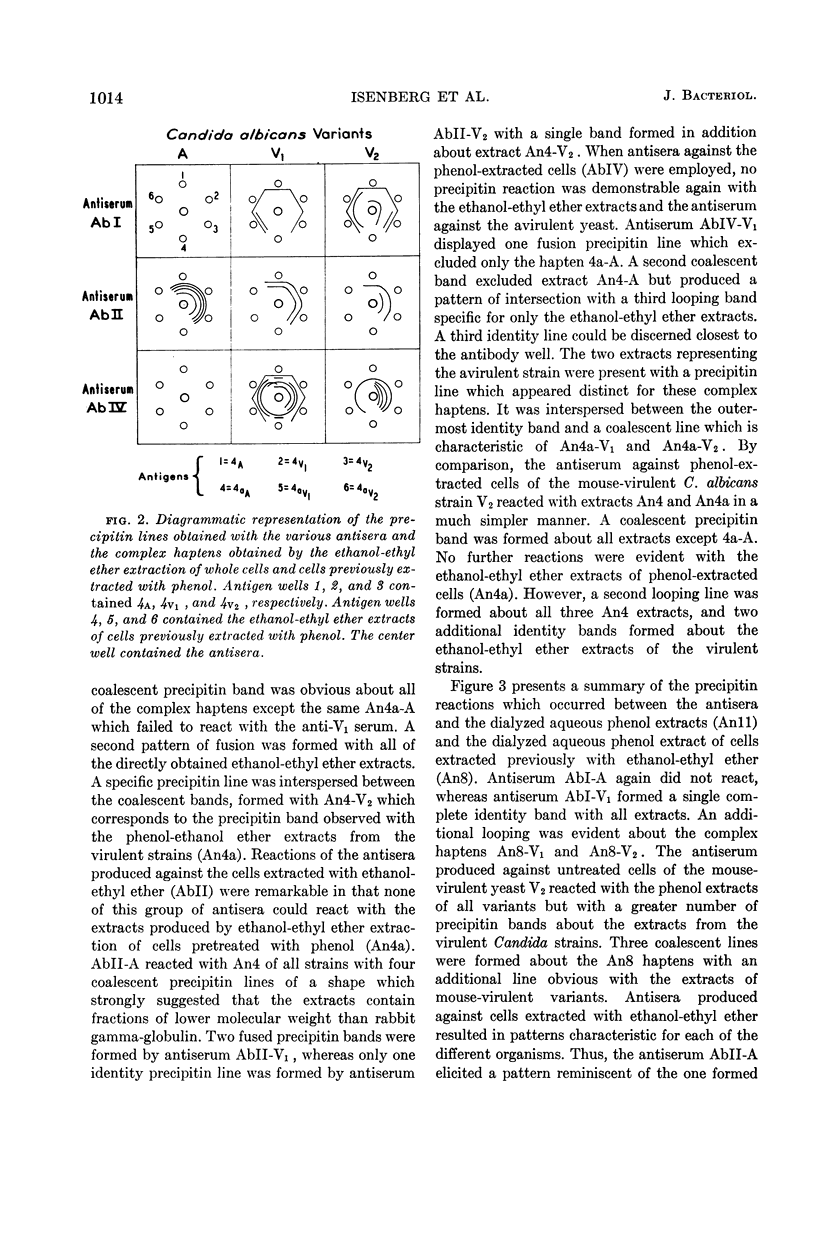
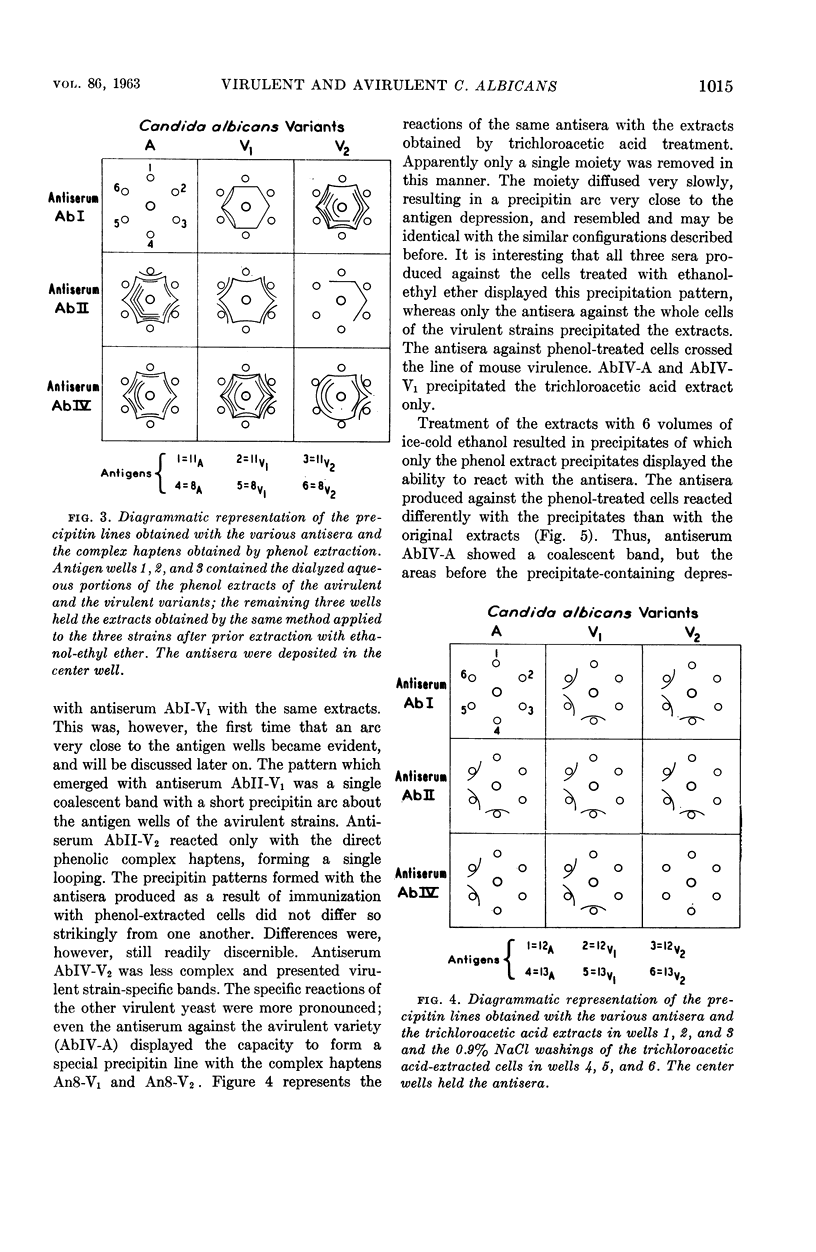

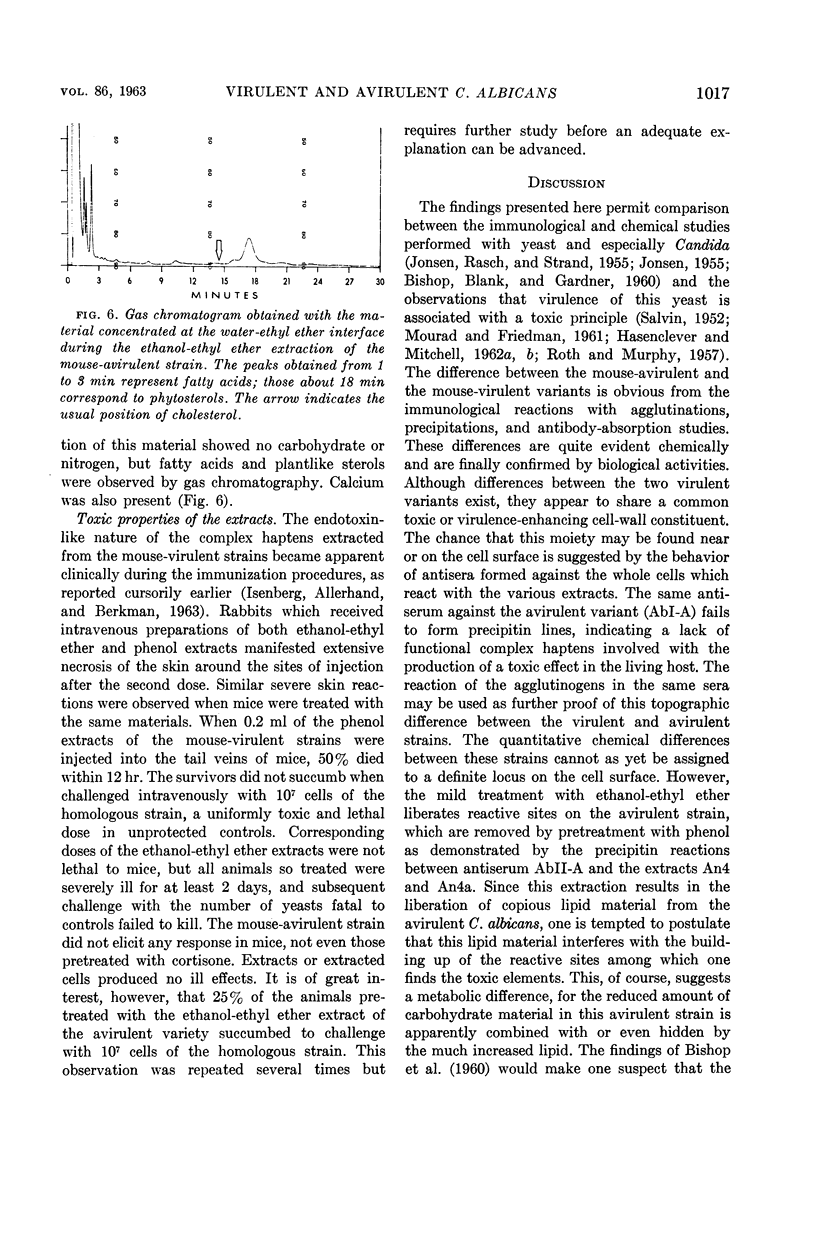
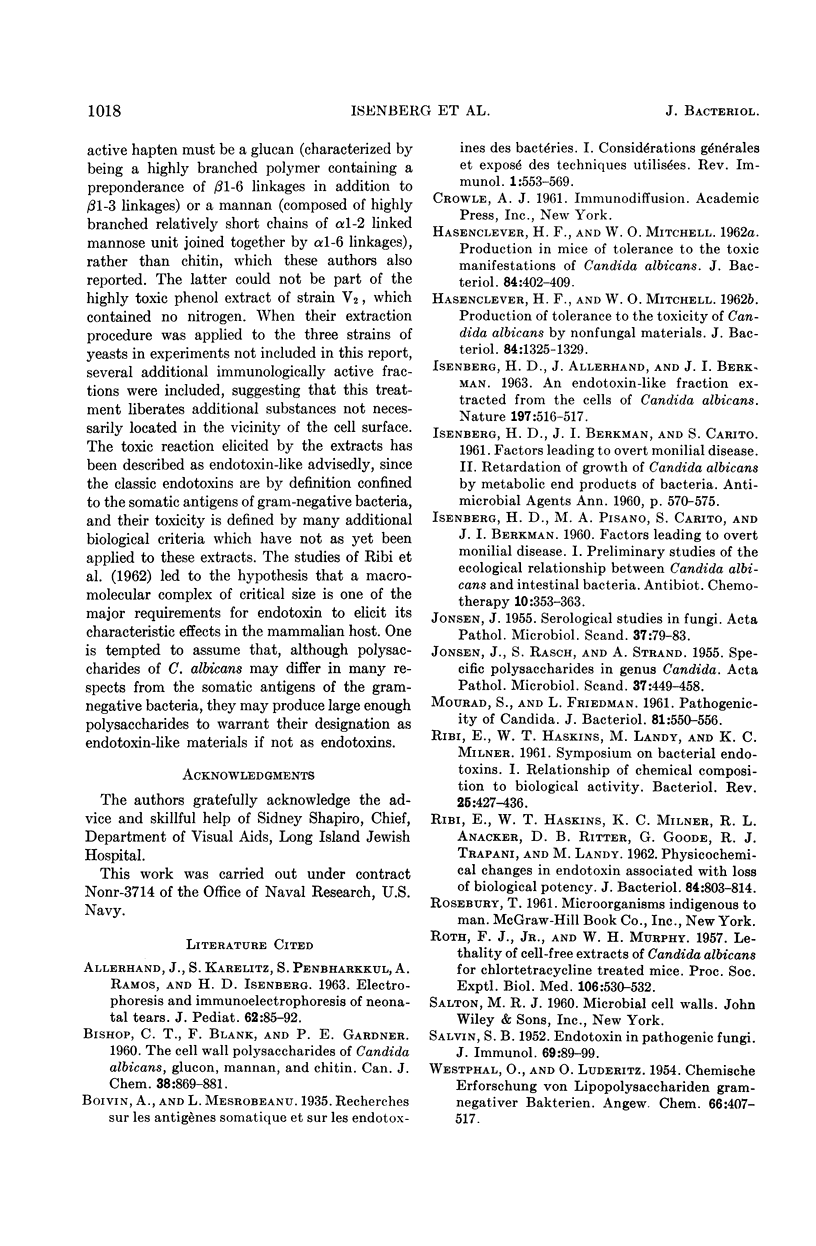
Selected References
These references are in PubMed. This may not be the complete list of references from this article.
- ALLERHAND J., KARELITZ S., PENBHARKKUL S., RAMOS A., ISENBERG H. D. Electrophoresis and immunoelectrophoresis of neonatal tears. J Pediatr. 1963 Jan;62:85–92. doi: 10.1016/s0022-3476(63)80076-1. [DOI] [PubMed] [Google Scholar]
- HASENCLEVER H. F., MITCHELL W. O. Production in mice of tolerance to the toxic manifestations of Candida albicans. J Bacteriol. 1962 Sep;84:402–409. doi: 10.1128/jb.84.3.402-409.1962. [DOI] [PMC free article] [PubMed] [Google Scholar]
- HASENCLEVER H. F., MITCHELL W. O. Production of tolerance to the toxicity of Candida albicans by nonfungal materials. J Bacteriol. 1962 Dec;84:1325–1329. doi: 10.1128/jb.84.6.1325-1329.1962. [DOI] [PMC free article] [PubMed] [Google Scholar]
- ISENBERG H. D., PISANO M. A., CARITO S. L., BERKMAN J. I. Factors leading to overt monilial disease. I. Preliminary studies of the ecological relationship between Candida albicans and intestinal bacteria. Antibiot Chemother. 1960 Jun;10:353–363. [PubMed] [Google Scholar]
- JONSEN J., RASCH S., STRAND A. Specific polysaccharides in genus Candida. I. Preparation and properties of water-soluble fractions. Acta Pathol Microbiol Scand. 1955;37(5):449–458. doi: 10.1111/j.1699-0463.1955.tb00969.x. [DOI] [PubMed] [Google Scholar]
- JONSEN J. Serological studies in fungi; comparison of agglutinins and precipitins in anti-candida sera. Acta Pathol Microbiol Scand. 1955;37(1):79–83. [PubMed] [Google Scholar]
- MOURAD S., FRIEDMAN L. Pathogenicity of Candida. J Bacteriol. 1961 Apr;81:550–556. doi: 10.1128/jb.81.4.550-556.1961. [DOI] [PMC free article] [PubMed] [Google Scholar]
- RIBI E., HASKINS W. T., LANDY M., MILNER K. C. Symposium on bacterial endotoxins. I. Relationship of chemical composition to biological activity. Bacteriol Rev. 1961 Dec;25:427–436. doi: 10.1128/br.25.4.427-436.1961. [DOI] [PMC free article] [PubMed] [Google Scholar]
- RIBI E., HASKINS W. T., MILNER K. C., ANACKER R. L., RITTER D. B., GOODE G., TRAPANI R. J., LANDY M. Physicochemical changes in endotoxin associated with loss of biological potency. J Bacteriol. 1962 Oct;84:803–814. doi: 10.1128/jb.84.4.803-814.1962. [DOI] [PMC free article] [PubMed] [Google Scholar]
- ROTH F. J., Jr, MURPHY W. H., Jr Lethality of cell-free extract of Candida albicans for chlortetracycline-treated mice. Proc Soc Exp Biol Med. 1957 Mar;94(3):530–532. doi: 10.3181/00379727-94-23002. [DOI] [PubMed] [Google Scholar]
- SALVIN S. B. Endotoxin in pathogenic q fungi. J Immunol. 1952 Jul;69(1):89–99. [PubMed] [Google Scholar]


